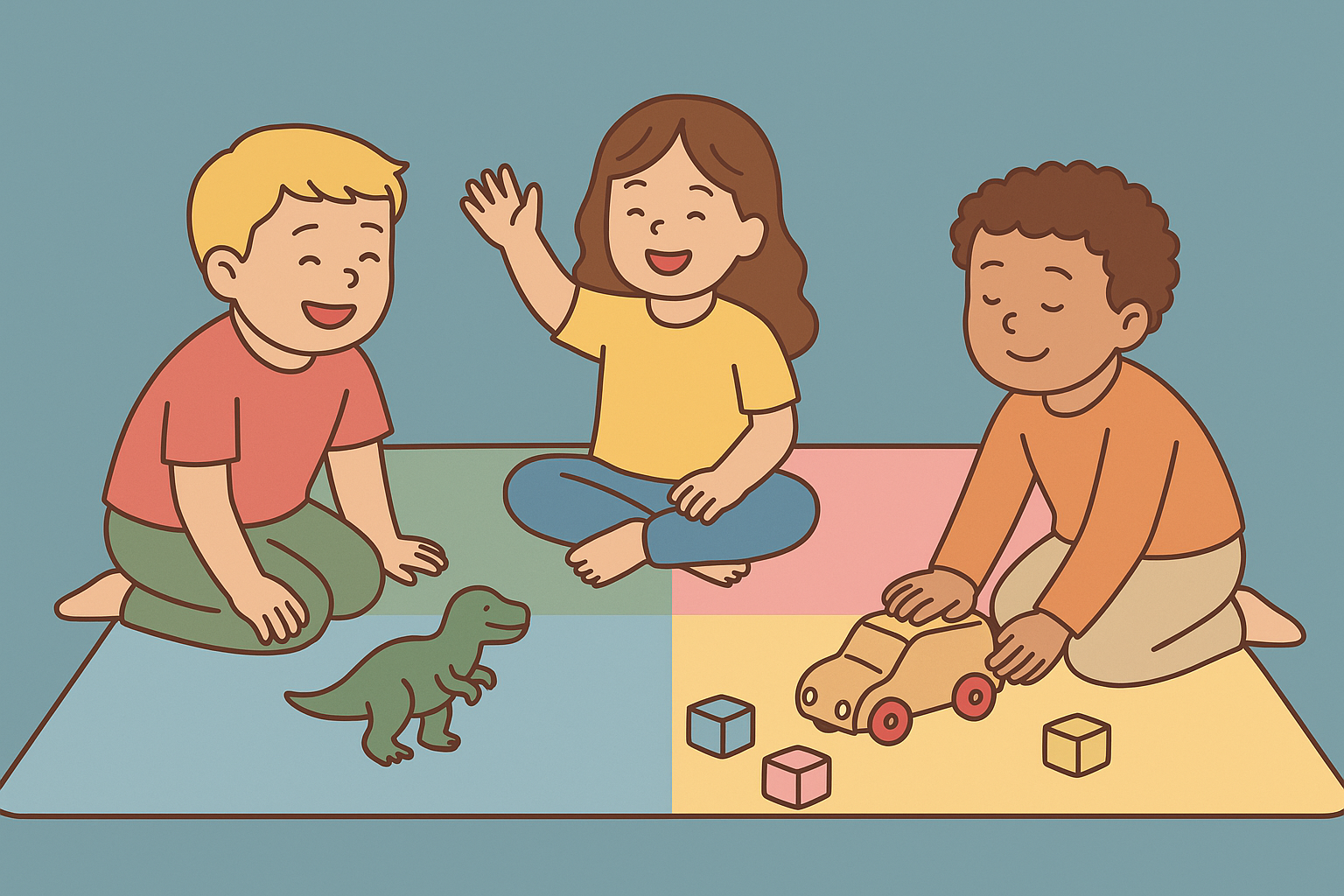Teaching Self-Control Through Play
Teaching Self-Control Through Play
Self-control isn’t something kids are born with — it’s something they learn. And one of the best classrooms for that lesson isn’t a desk or a timeout chair — it’s the playroom.
Play naturally helps children practice patience, focus, cooperation, and emotional balance. When parents join that play intentionally, every game becomes a gentle rehearsal for life’s bigger challenges.
Why Play Builds Self-Control
In play, kids constantly navigate impulses:
“I want the toy now — but I have to wait my turn.”
“I’m frustrated that I lost — but I still want to play.”
These are micro-moments of emotional regulation. Every time your child pauses, shares, or problem-solves, they’re strengthening the prefrontal cortex — the brain’s control center for focus and self-discipline.
✨ In short: play is emotional training disguised as fun.
👉 See also: How to Use Co-Regulation Instead of Control
1. Play Games With Built-In Waiting
Turn-taking games help kids learn patience and impulse control.
Try:
Simon Says — builds focus and inhibition.
Red Light, Green Light — strengthens body control.
Freeze Dance — teaches stopping on cue while having fun.
✨ These games teach kids to pause before reacting — the foundation of self-control.
Skill focus: impulse control, focus, timing
2. Use Pretend Play to Practice Emotional Regulation
In pretend play, children rehearse big emotions safely. They explore frustration, excitement, and disappointment — all while staying within the playful “bubble.”
Ideas:
Role-play being “angry monsters” who calm down with breathing.
Have stuffed animals take turns or apologize after “accidents.”
Model how to lose a game gracefully: “Oh no, I lost — but I’ll try again!”
✨ Pretend emotions help real ones feel less overwhelming.
Skill focus: empathy, resilience, problem-solving
👉 See also: Understanding the Science of Tantrums
3. Build Self-Control Into Everyday Routines
Turn daily moments into mini games that require focus and waiting.
Examples:
“Let’s see who can stay still like a statue while I count to 10.”
“You can ring the bell only when I finish the story.”
“Walk like quiet ninjas to the car.”
✨ Kids regulate better when self-control feels playful, not forced.
Skill focus: mindfulness, patience, emotional awareness
4. Use Music and Movement
Rhythmic activities — clapping games, drumming, or dancing to stop-start music — build coordination and emotional rhythm. They teach kids how to control energy and re-engage after stopping.
Try:
“Freeze and melt” dance sessions.
Marching to beats that get faster and slower.
Calm-down yoga poses between energetic songs.
✨ Rhythm organizes the nervous system — a key to smoother behavior.
Skill focus: self-regulation, body control, rhythm awareness
5. Model Your Own Self-Control in Play
When you stay calm during frustration — even in a simple game — you show your child how to recover gracefully.
Say:
“I really wanted to win, but I’m happy you did!”
“Let’s take a deep breath before we start the next round.”
✨ Modeling emotional balance is more powerful than any rule.
Skill focus: emotional modeling, resilience, calm presence
👉 See also: Staying Calm When Your Child Won’t
6. Use Play to Practice “Stop and Think” Moments
Create gentle pause cues inside playtime.
For example:
Have a “freeze” signal when excitement runs high.
Add a silly prompt: “When I say ‘banana,’ everyone takes a big breath.”
Use a calm-down song to reset after a chaotic game.
✨ Fun cues create real-world habits.
Skill focus: impulse awareness, transition management, cooperation
7. Reflect After Play
When the game ends, the teaching begins.
Ask:
“What helped you stay calm?”
“How did you handle losing?”
“Was it hard to wait? What made it easier?”
✨ Reflection turns playful moments into emotional wisdom.
Skill focus: communication, reflection, resilience
8. Make It Consistent
The key is frequency, not formality.
A few minutes of intentional play daily builds lifelong habits.
✨ Over time, your child’s brain learns that pausing, breathing, and recovering are natural parts of everyday life — not punishments, but skills.
Skill focus: consistency, routine, emotional integration
Key Takeaways
Self-control grows through repetition, not restriction.
Play teaches the “pause” — the gap between feeling and action.
Parents model emotional balance best when they join the fun.
Every shared laugh builds a calmer, more connected child.
Play is nature’s teacher — it builds patience, empathy, and emotional strength better than any lecture ever could. When your child learns to pause, laugh, and try again during play, they’re not just having fun — they’re practicing the emotional flexibility that will guide them through every challenge ahead.
This content is for educational purposes and is not a substitute for professional medical or psychological advice.
Popular Parenting Articles


